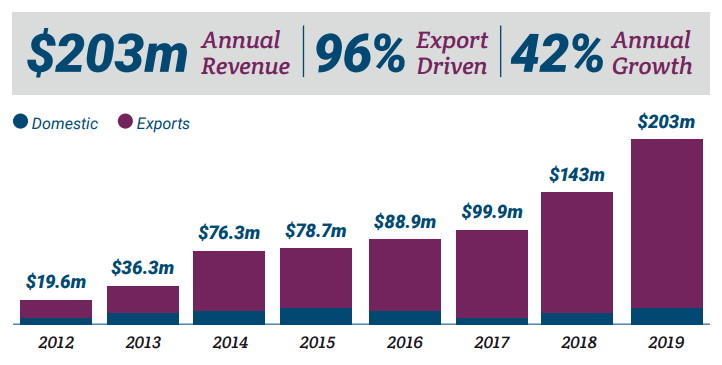New Zealand interactive game developers earned $203.4 million dollars during the 2019 financial year – double the $99.9m earned only two years earlier.
The success comes from targeting audiences around the world and 96% of the industry’s earnings came from exports. The figures come from the annual NZ Game Developers Industry Survey of 39 interactive, gaming, virtual reality, augmented reality and edTech companies.
“What we’re seeing are the fruits of the last generation of New Zealand interactive studios’ hard work. Our opportunity is to support the next generation of creative tech companies to join them,” says New Zealand Game Developers Association chairperson Cassandra Gray.
The ten largest studios earned 93% of the industry revenue, employed 77% of the workforce and are now ten years old on average. The survey results confirm growth projections made in the Interactive Aotearoa study published by the Game Developers Association last year, which showed that if the industry continued its 39% average annual growth it could be a billion dollar industry in 2025.
This makes interactive media the fastest growing tech sector and creative industry in New Zealand.
Fifty-nine percent of studios expect significant growth (greater than 10%) in the coming year. In the last year, eight New Zealand-made apps debuted the new Apple Arcade service, NinjaKiwi’s Bloons TD6 topped Apple’s paid games charts, Grinding Gear Games’ Path of Exile was one of the top ten played PC games in the world, RocketWerkz opened a second studio in Auckland and Valleys Between by Little Lost Fox won the Best Feel Good Game at the International Mobile Gaming Awards.
The companies surveyed employed 683 creative and hi-tech workers, an increase of 133 new jobs this year. A Creative NZ and NZ On Air study, A Profile of Creative Professionals 2019, found that game development was one of the best paid creative occupations in the country. Thirty-one percent of the roles in the industry are for programmers, 29% are artists, 24% for game designers or producers, 12% for management or marketing. For every technical role in the industry, 1.25 creative or design jobs are created.
Nearly half of the studios (47%) said that skills shortages were limiting the growth of their business. This has intensified since last year, when only 24% of studios reported this. 79% of the skills shortages were for experienced senior staff in art and technology, and 14% of the industry are on work visas. Gender diversity remains a concern for the sector, with 21% of employees identifying as female or non-binary. Attracting early stage development funding and attracting investment for expansion continue to be the biggest growth challenges to the industry.
The educational benefits of simulations and interactive training continues to be recognised. Twenty-four percent of New Zealand interactive studios have made games or apps for businesses clients or government departments and 20% have made games for educational institutions.
The surveyed developers make interactive media for a range of devices and global markets. 63% make mobile apps, 53% make games for PC, 38% make console games, 22% make augmented reality apps and 19% make virtual reality games.
The data comes from a survey of 39 New Zealand Game Developers Association studios conducted by independent researcher Tim Thorpe and is for the financial year ending 31 March 2019.




